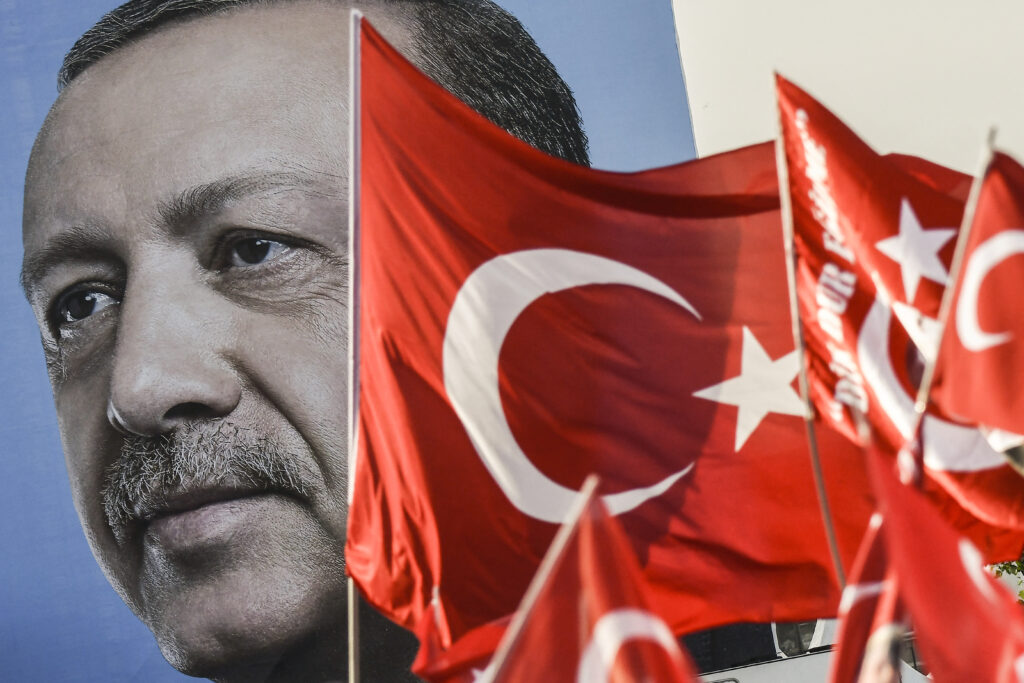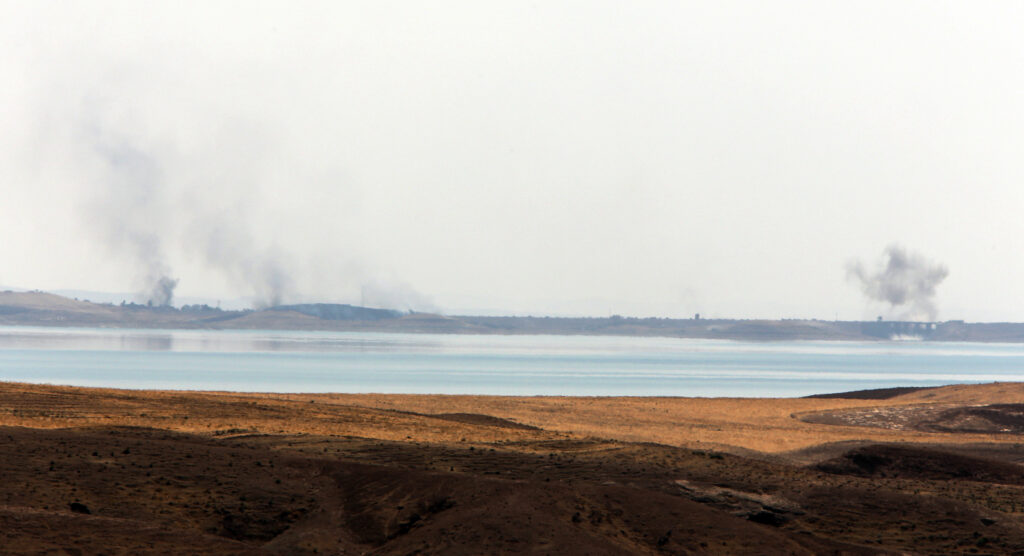By Dylan J Baun
Five days after Egyptian President Hosni Mubarak resigned, symbolizing the triumph of people power and nonviolent action, the New York Times ran an article about the influence of one scholar on the uprising in Egypt: Dr. Gene Sharp. Sharp is the author of From Dictatorship to Democracy: A Conceptual Framework for Liberation, a guidebook on how to overthrow an authoritarian regime.
The NYT article noted that several Egyptian activists attended a conference held in Cairo (after the clampdown of the 2008 April 6th Youth Movement), which introduced effective modes of nonviolent action that Egyptians could adopt in future protests. The plot thickens: this conference was financed by the International Center on Nonviolent Conflict, which was founded by a former student of Sharp.
Following publication of this article, bloggers and activists of the region struck back, infuriated that the homegrown organization, mobilization and overthrow of Mubarak were attributed to an 83-year old Bostonian. Tweeters began a sarcastic #Gene Sharp Taught Me feed, including highlights such as I was happy all my life under Mubarak, but suddenly #GeneSharpTaughtMe I must rebel and #GeneSharpTaughtMe that the west always wants to be sure that white men get credit for all the great things that happen.
To be sure, controversy over the Gene Sharp connection has affected not only the Egyptian case, but also the other protest movements unfolding across the Middle East and North Africa (MENA) region. However, has anyone actually asked, did Gene Sharp get it right? How applicable are his theories on toppling dictatorial regimes to the MENA context and the strategies of the differing protest movements? Is his explanation for why nonviolent action becomes violent appropriate to describe those outstanding cases like Libya, Yemen or Syria?
Apart from the fiery debate over the Gene Sharp factor, a critique of his seminal work, along with a comprehensive understanding of the early-2011 MENA protests, can uncover the promises and pitfalls of Sharps framework on nonviolent action.
A thorn in the side of authoritarians
Lets be clear: Gene Sharp and his theories on political defiance did not spread due to a US conspiracy. From Dictatorship to Democracy has a number of concepts that can translate across borders and speak to disenfranchised publics under authoritarian regimes. Despite those that have cried foul over the reported link between Sharp and the recent uprisings, several of his theories are relevant in the 2011 MENA context.
Sharp argues that to successfully topple an authoritarian regime, objectives must be gradually implemented, limited in scope and, most importantly, rational; Sharp is a realist in this sense. Indeed, pragmatic demands were paramount in all of the early-2011 MENA protests. For decades people of the region have borne witness to the failures of Arab-Israeli peace negotiations, the permeation of exploitative neoliberal policies in their countries and the futility of anti-Western rhetoric at the hands of their fearless leaders. This entrenched history is one catalyst for the rational political goals showcased by these protest movements: the overthrow of their leader and the establishment of a more transparent government. Whether inspired by Sharp or not, like he suggests, protestors have deliberately chosen not to fuse this plausible, domestic objective (however difficult it may be) with anti-US, Israeli, IMF or World Bank slogans. This pragmatism has been pivotal to the widespread legitimacy and success of these movements and their quests.
To Sharp, strategic planning is also a must. It is necessary to ensure the victory of a nonviolent campaign. Whether taught by Sharpists or not, a recent history of protest organization in Egypt contributed to the success of dethroning Mubarak in only eighteen days. This is not to claim that nonviolent protests were uncommon in the past, as one only has to examine the first Palestinian Intifada to discover a recent mass protest movement in the region. Yet the Egyptian 2008 April 6th Youth Movement had a different flavor than its predecessors. The combination of social media, workers mobilization and a pluralistic grassroots structure were the initial thrusts in nonviolent strategy that helped pave the way for January-February 2011. With the protest chain reaction in full force after Egypt, similar movements were intensified in Yemen, Libya, Bahrain and Syria, but without the same level of organizational history or, sadly, similar results. Here, Sharps focus on strategic planning can partially distinguish the trajectories of different MENA uprisings.
Sharps observations regarding the allegiance of the army provide important insight on the different cases in the 2011 MENA context. His term political jiu-jitsu demonstrates the clear advantage of nonviolent strategy: violent regime actions met by resolute nonviolence can trigger the consciences of regime supporters. To Sharp, army supporters are essential to a movement, as it is nearly impossible to overthrow a dictatorship if the dictator retains docile soldiers. It was crucial that the Tunisian and Egyptian armies chose not to remain rigidly loyal to the since-toppled regimes, while in Yemen, Libya and Syria, the loyalty of at least some high-ranking generals and soldiers (regardless of the number of defections) ensures that the regime can continue to use coercive action without ceding power.
What if things get violent, Dr. Sharp?
Sharp repeatedly reiterates that if violence is utilized as a strategy for protestors, they are merely playing into the dictatorships strength: the monopolization of political violence. However, Sharp does not articulate exactly how a nonviolent protest movement can avoid a drift into violent action. Sharp obsesses over this point of nonviolence in the face of regime violence, and how difficult it can be to maintain a nonviolent path, but he does not address the difficulties a nonviolent movement could face. For example, how does one respond when a leader authorizes bombing campaigns on civilian locations? Or when a president gives the green light to snipers to take down unarmed demonstrators? Or when a president besieges and levels a dissident town?
Sharps framework on nonviolent strategy does not tackle these horrifying what-if scenarios, but only suggests that violence is not the answer. Nor does his framework account for a societys relative level of military readiness (aside from the national army), access to weapons, training or funding in the face of such extreme regime transgressions. He does not account for separate historical developments in highly militarized societies, the perception that nonviolent action loses its advantage, or that these decisions might not be up to the protestors themselves.
Thus, his theory fails to explain the distinct levels of violence attached to each case in the MENA context. And with regime stubbornness and excessive brutality persisting in Yemen and Syria, it is not unreasonable to think that these countries could shift towards a two-way, protracted conflict in the not-so-distant future, as has happened in Libya.
To make sense of the differences between the experiences of protestors, a framework that does not account for case-based nuances achieves little. For Sharps theory to apply, one must fill the gaps with case knowledge, investigating oil politics, institutionalized cronyism, sectarian or tribal divides, and most importantly, the threat each successful protest movement poses to the maintenance of the international status quo.
It wasnt me
When commenting to the New York Times on his connection to the successful, nonviolent protests of Egyptians, Sharp said The people of Egypt did thatnot me. Sharp clearly understands what he has created: a framework that loosely outlines modes of nonviolent strategy (198 methods, to be exact). Further, the first conclusion of his guidebook is that overthrow is possible and rational. Tunisians and Egyptians proved that.
Still, his other conclusions especially the persistence of nonviolence are less satisfying.In response to these ambiguities, one of the tweeters of the Gene Sharp Taught Me Twitter thread wrote #GeneSharpTaughtMe that the Libyans got what they deserved for not following his teachings. While we should not play up Sharp conspiracies or embellish his influence, it is necessary to remember that From Dictatorship to Democracy is a guidebook based on the end goal of successful liberation. We must go elsewhere to truly conceptualize the dissimilar trends of the various early-2011 MENA protest movements.
Dylan J Baun is a short-term researcher at the Middle East Institute. He is a visiting PhD student from the University of Arizona and Research Associate for the Southwest Initiative for the Study of Middle East Conflicts (SISMEC). His research interests include conflict studies, social engineering projects and nationalist historiography in the Middle East and North Africa. The views expressed here are his own. He can be reached at djbaun@yahoo.com.





